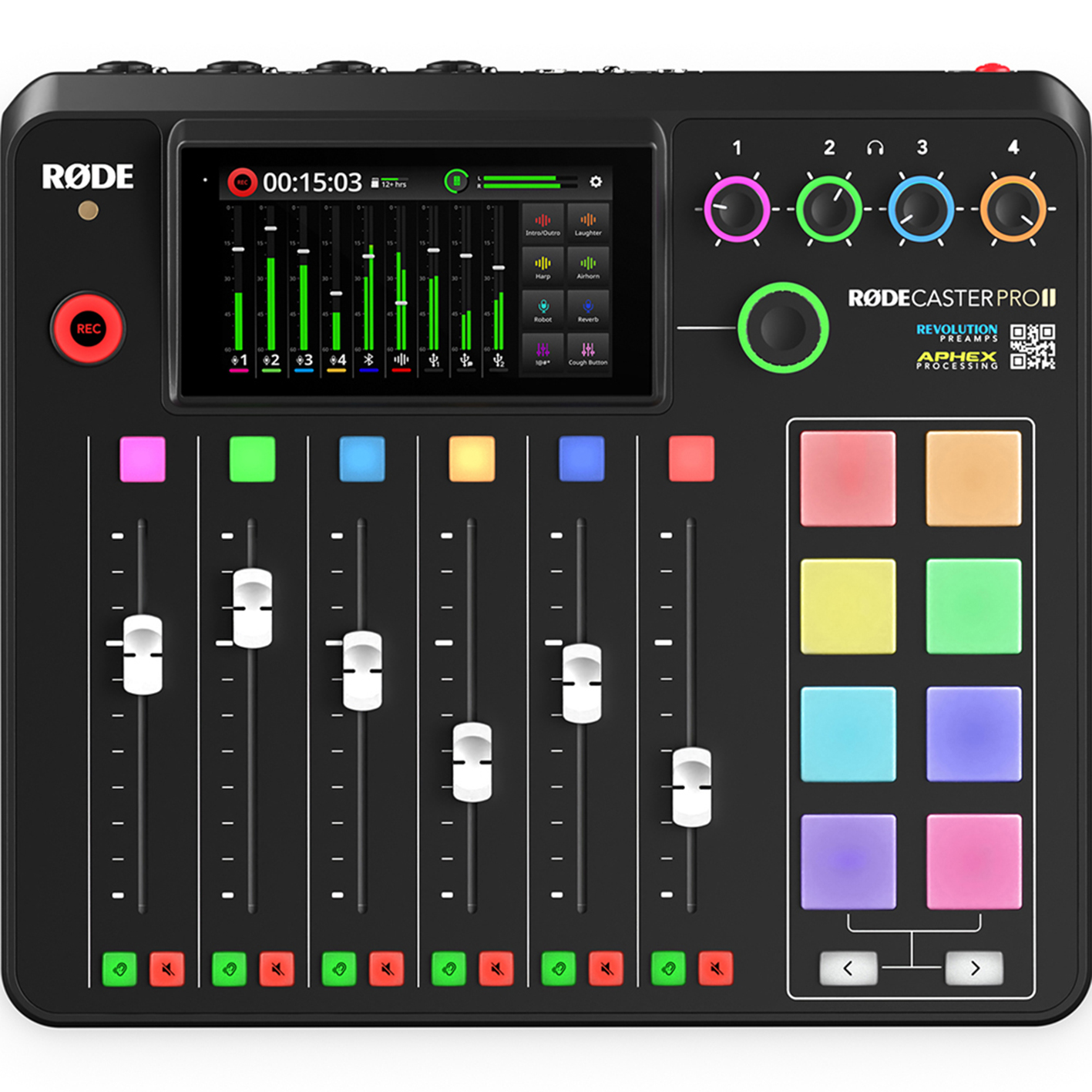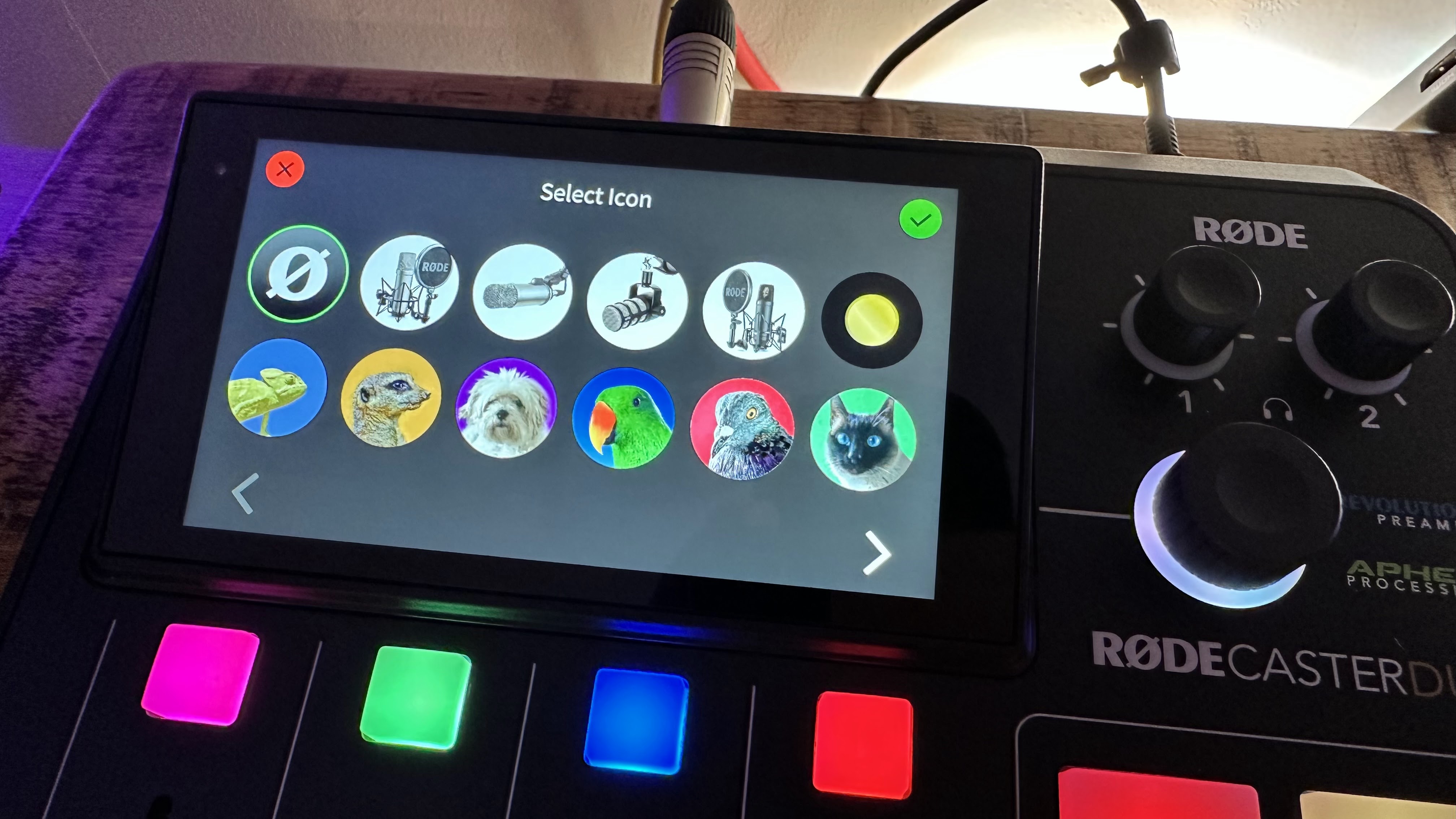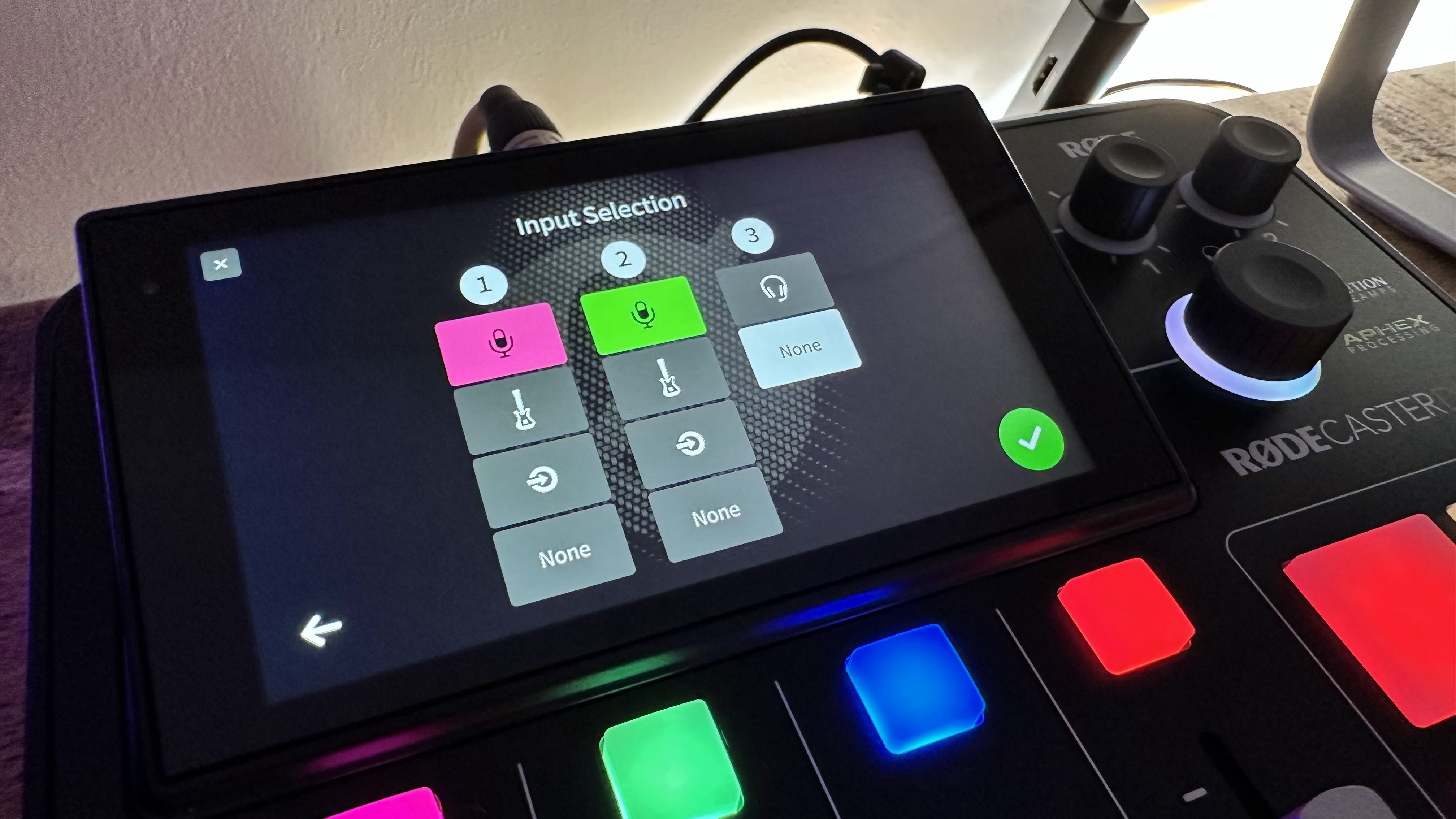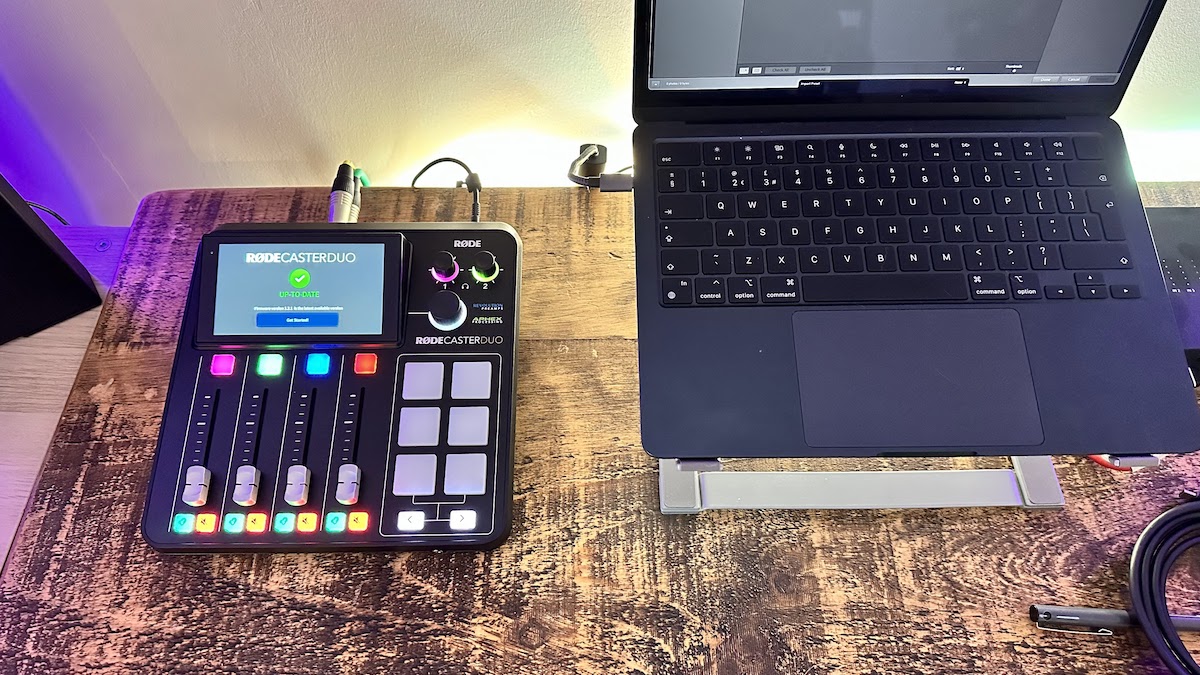MusicRadar Verdict
The Rode Rodecaster Duo is an impressive device. It achieves its aim of marrying superb audio quality with accessibility and doesn’t require an audio engineering background to get the best out of it.
Pros
- +
Compact, lightweight footprint
- +
Plenty of connectivity options
- +
So, so simple to get started
Cons
- -
The plastic housing doesn’t exactly scream premium
MusicRadar's got your back
Rode Rodecaster Duo review: What is it?
One of the best things about studio and production technology right now is how it’s made things easier for anybody, from any background, with pretty much any skill level (or lack thereof…) to get started. Take podcasting, for example. While there are podcast producers with studios full of expensive, complicated outboard gear, there are also producers, hosts and hobbyists who don’t have the time, budget or inclination for that. Enter the Rode Rodecaster Duo, which aims to simplify the process while also meaning you don’t need a studio full of specialist gear to professionally record your shows or streams.
The Rodecaster Duo comprises an audio interface, mixing desk and recording function, all in one box. You can connect a couple of podcast mics into it, and headphones or speakers, set your levels and be recording within a matter of minutes. It contains everything a simple podcast setup would require and has a few neat additional functions too, which we’ll come onto later.
Rode has form in the podcasting space too. As the more affordable smaller sibling to the Rodecaster Pro II, the Rodecaster Duo has the same high-end mic pre-amps and glorious multitouch display as its stablemate, just with less connectivity for mics and a reduced track count. But for a small, possibly home-based setup it looks like it’d have more than enough on offer for anybody looking to elevate their podcast game. Let’s look at it in some more detail.
Rode Rodecaster Duo review: Performance & verdict

For a device that sets its stall on providing podcast producers with a plug-and-play recording experience, the Rodecaster Duo certainly looks the part. There’s RGB lighting everywhere, and big, squidgy buttons which just about stay on the right side of Serious Audio Tool conventions. The box itself is relatively small, housed in black plastic which, if I’m honest, doesn’t give the impression of a premium product but it does keep the unit lightweight.
On the front, you’ve got the four main faders, which are plenty big enough for some nice tactile control, with dedicated mute and solo buttons underneath each fader. There are also dedicated volume controls for the two headphone outputs, with nice LED visual feedback halos around each, and a main control wheel for navigating the Duo’s various settings and parameters. Six coloured pads make up the unit’s main control surface - more on these shortly.

Rode Rodecaster Pro II
Roland BridgeCast
Maono MaonoCaster
It looks relatively sparse if I’m honest, but this is made ok because of the superb multitouch display which sits up top. This has been superbly executed; it's fast and responsive in switching between different pages and parameters, and with pin-sharp detail which helps when there’s potentially a lot of information on screen at any time.
Setting up the Duo is as simple - or detailed - as you like thanks to built-in wizards which guide you through connecting everything up in your desired way. Immediately after turning it on I was walked through how to connect microphones, instruments and Bluetooth devices, while also being able to name and assign an image to my recordings. Of course, being a podcasting device, the Rodecaster names its projects ‘Shows’, but the principle is the same. Settings, personalisation and sounds are stored within these Shows, ready to be accessed later.
The Duo has an interesting approach to connectivity which essentially boils down to there being lots of it, and all of it is useful. At the back of the unit, where you can find the two Neutrik combi inputs - for both XLR and jack devices - and the headphone outputs, you’ll also see no less than three USB-C ports. One is for power, via an external brick, while the other two are multifunction inputs and/or outputs, allowing you to connect the Rodecaster to two separate devices. You could, for example, have one as an input for a smartphone or tablet, and the other outputting everything to your main computer. Or - more interestingly given the recent trend for compact, low-cost USB microphones - use both as input connections for these. The built-in WiFi also means you can wirelessly connect certain mics, including Rode’s small videography mics, freeing up either the USB or XLR slots.

To test the Rodecaster, I set up a simple two-microphone rig, connected via XLR, with my iPhone connected via Bluetooth for the purposes of streaming some audio into the device, and recorded it all onto the onboard Micro SD slot, and separately out into a multitrack project in Adobe Audition. Straight away, the preamps struck me with their clarity and low overall noise floor. Using a Shure SM7B and an Audio Technica AT2040USB, I was immediately transported to broadcast (or podcast) speech heaven. The addition of some audio sweetening tools, like EQs and compression effects, inside the device meant the sound reaching the SD card was already pretty spot on, and wouldn’t require further post-processing in Audition. This was borne out when I checked the Audition recordings and found, other than a tiny dash of normalization, they were perfectly usable from the source recordings. Nice.
The six programmable pads on the front are another nod to the podcast and streamer crowd, allowing you to select up to 18 different ‘things’ - from one-shots to loops, and even MIDI commands - which can be fired off at will. I experimented with storing a music bed on one, which could be used as an intro jingle, and then added some slightly more cliched podcast sounds onto a few others. I doubt Konami realised in 1998 that their Metal Gear Solid sound effect would go on to become such a cultural icon in 2024, but here we are.

To sum up, the RodeCaster Duo is great for two-person podcasts - in fact, possibly the outstanding choice on the market today for this specific use case. It achieves its aim of being easy to use but with enough flair and innovation within to elevate it above its competition. I loved the amount of different connectivity options, and I was extremely impressed with the sensible approach to supporting less confident producers through the setting up period.
If you’ve been recording podcasts - or streaming - and are looking for a way to take things up a level, then the Rode Rodecaster Duo is an easy one to recommend. It’ll probably cost more than it would to get a basic interface and a couple of USB mics, but the additional features and functionality, all geared specifically with podcast producers in mind - more than make up a slightly higher initial price point.
Rode Rodecaster Duo review: Hands-on demos
Tom Buck
Radio.co
Think Media
Rode Rodecaster Duo review: Specifications
- Inputs: 2 x analogue inputs (XLR/jack combi)
- Outputs: 2 x headphone outputs, 2 x speaker outputs
- Tracks: Four
- Connectivity: USB-C, Bluetooth
- Contact: Rode
Chris Corfield is a journalist with over 12 years of experience writing for some of the music world's biggest brands including Orange Amplification, MusicRadar, Guitar World, Total Guitar and Dawsons Music. Chris loves getting nerdy about everything from guitar and bass gear, to synths, microphones, DJ gear and music production hardware.
GAK is gone: UK music store giant GAK just got bought by Gear4Music for £2.4 million
“It pretty much half killed us. Whether the band would continue was in the balance”: The Radiohead album that almost broke up the band, turned the music industry on its head - and became their best record
“It is ingrained with my artwork, an art piece that I had done years ago called Sunburst”: Serj Tankian and the Gibson Custom Shop team up for limited edition signature Foundations Les Paul Modern











